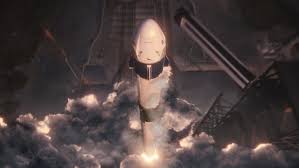
Breaking News
 They've Been Feeding You Poison (And Calling It Food)
They've Been Feeding You Poison (And Calling It Food)
 Tattoo ink may cause prolonged changes to the immune system
Tattoo ink may cause prolonged changes to the immune system
 Travel gadget promises to dry and iron your clothes – totally hands-free
Travel gadget promises to dry and iron your clothes – totally hands-free
 Duckweed: A sustainable, protein-packed food source smeared by Big Ag
Duckweed: A sustainable, protein-packed food source smeared by Big Ag
Top Tech News
 Perfect Aircrete, Kitchen Ingredients.
Perfect Aircrete, Kitchen Ingredients.
 Futuristic pixel-raising display lets you feel what's onscreen
Futuristic pixel-raising display lets you feel what's onscreen
 Cutting-Edge Facility Generates Pure Water and Hydrogen Fuel from Seawater for Mere Pennies
Cutting-Edge Facility Generates Pure Water and Hydrogen Fuel from Seawater for Mere Pennies
 This tiny dev board is packed with features for ambitious makers
This tiny dev board is packed with features for ambitious makers
 Scientists Discover Gel to Regrow Tooth Enamel
Scientists Discover Gel to Regrow Tooth Enamel
 Vitamin C and Dandelion Root Killing Cancer Cells -- as Former CDC Director Calls for COVID-19...
Vitamin C and Dandelion Root Killing Cancer Cells -- as Former CDC Director Calls for COVID-19...
 Galactic Brain: US firm plans space-based data centers, power grid to challenge China
Galactic Brain: US firm plans space-based data centers, power grid to challenge China
 A microbial cleanup for glyphosate just earned a patent. Here's why that matters
A microbial cleanup for glyphosate just earned a patent. Here's why that matters
 Japan Breaks Internet Speed Record with 5 Million Times Faster Data Transfer
Japan Breaks Internet Speed Record with 5 Million Times Faster Data Transfer
SpaceX's Crew Dragon scheduled for first trip to orbit

Though designed to carry astronauts into space, the flight will be the first in a series of unpiloted tests to take place this year to verify the safety of the vehicle.
The Crew Dragon spacecraft is built from the same blueprint as SpaceX's Dragon capsule, which has been shuttling supplies to the International Space Station since 2012. The cabin, however, is optimized for comfortable human travel rather than cargo, featuring carbon fiber seating finished in Alcantara, climate control and four windows for panoramic views.
Back in early January we got a glimpse of the Crew Dragon perched on the pad in Florida atop a Falcon 9 rocket, with SpaceX seemingly preparing the booster-capsule combo for lift-off. NASA has now confirmed it is targeting a 2:48 am lift off on March 2 from its Kennedy Space Center in Florida.
It is expected to reach preliminary orbit ten minutes after launch and dock with the International Space Station around 24 hours later, where it will remain attached for five days. Here it will provide the crew with around 400 lb (180 kg) of fresh supplies, and then carry research samples back to Earth when it departs on March 8.

 Advanced Propulsion Resources Part 1 of 2
Advanced Propulsion Resources Part 1 of 2

